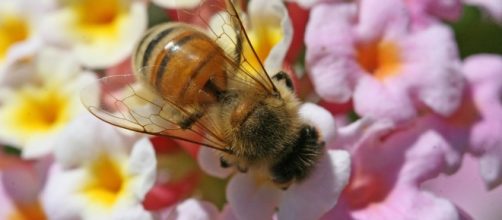Speaking during the American Association for the Advancement of Science (AAAS) annual meeting panel on February 19th, Taylor Ricketts of the University of Vermont (UVM) presented his research findings during a presentation entitled: Plan Bee: Pollinators, Food Production, and U.S. Policy. Ricketts is a conservation ecologist and director of UVM's Gund Institute for Ecological Economics.
How can we save the wild bee?
Described as the first national map of wild bee pollination, these research findings paint a startling picture of the landscape of Bee Population Decline while also correlating this with the rise in the necessity for agricultural crop pollination.
Though originally published in 2015 in Proceedings of the National Academy of Sciences, Rickett's research was presented to the multidisciplinary scientists at the AAAS in hopes of fueling innovation and collaboration around this topic. In his view, without considered efforts undertaken to address the decline of wild bees, drastic economic losses could result from the impact of U.S. agriculture. Currently, pollinators such as wild bees are suggested to be directly connected to as much as $3 Billion of the domestic U.S. economy.
The map Ricketts developed covers a very wide area of key U.S. agricultural zones in California, the Pacific Northwest, the upper Midwest and Great Plains, west Texas, and Mississippi River Valley.
In these areas, losses of wild bees are leading to the need for increased artificial methods of pollination. Though pesticides, climate change, and other factors contribute to losses in the bee population, in this current research, the blame falls on development.
In all of the target areas of greatest concern across 11 states, Ricketts describes increases amounting to land used to grow corn by as much as 200% over a five-year period. Without access to the wild grasslands where bees traditionally made their homes, their populations are threatened.
Many of the areas of greatest concern are either connected to the growth of specialty crops such as almonds, blueberries, and apples because they rely so heavily on native pollinators.
Additionally, certain crops such as pumpkins, watermelons, pears, peaches, plums, apples, and blueberries were found to be growing in the highest rates in areas with the least ability to naturally support them due to the decline of bees.
Will future generations forgive us for forgetting about the wild bee?
It is estimated that there as many as 4000 species of bees native to the United States. Without finding a way to protect their population numbers, the U.S. may face unprecedented challenges. Future generations may see the economic impact as one small piece of this increasingly complicated puzzle.

